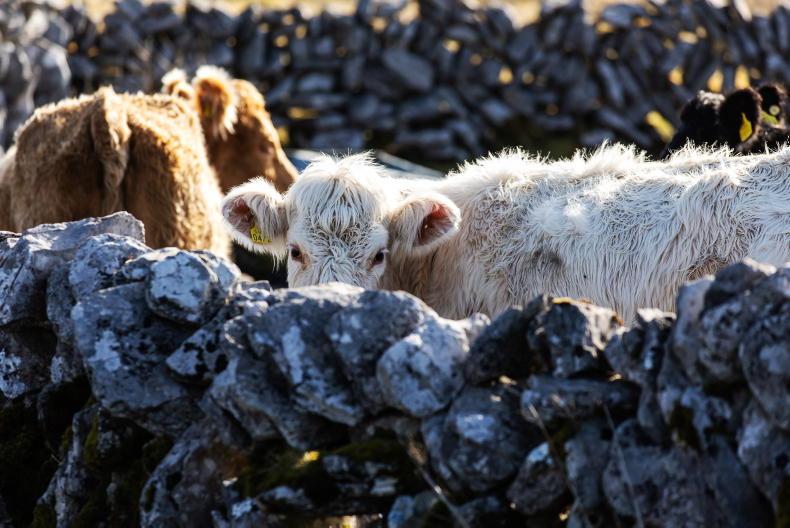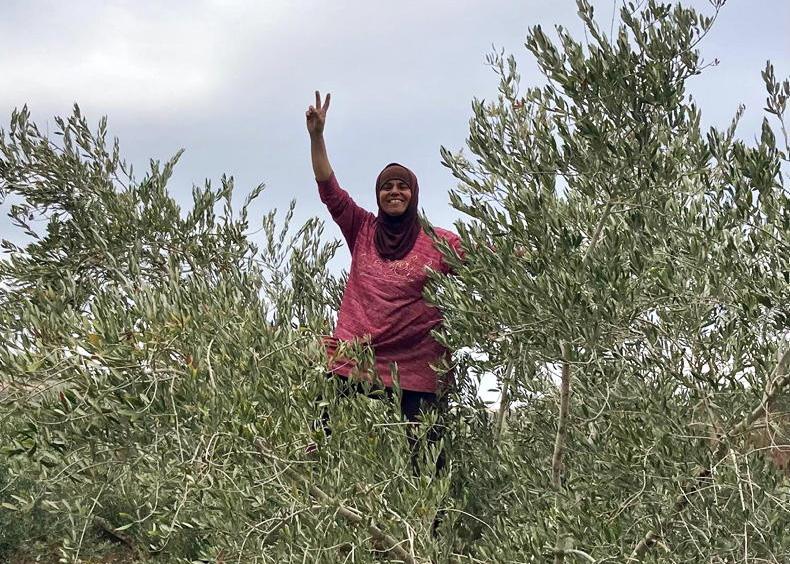Coppicing of hedgerows
Task: This consists of cutting hedgerows that have lost vigour and have stems which are too large to lay to ground level. Hedgerows must be fenced and any gaps must be filled in by planting suitable native species. Laying of hedgerows
Task: This involves laying hedgerows which have lost their vigour and offer a low environmental benefit. Hedgerows must be fenced off from livestock and any gaps must be filled in with suitable native species. Traditional dry stone wall maintenance
Task: This measure rewards farmers for maintaining traditional dry stone walls. Walls must be free from concrete and vegetation such as ivy and briars.Tree planting
Task: This can be selected as a general measure or as a measure to gain priority entry to the scheme. At least 10 trees are required for the general measure and 100 for priority entry. The maximum number of trees farmers can be paid for is 300. Trees at a minimum height of 60cm can be planted in rows, groups or parkland, with 4m spacing used. Each tree must be staked, protected with a tree shelter and fenced. Three native species must be included.
Tree belts to capture
ammonia
Task: This involves planting tree belts to capture ammonia around farmyards. The tree belt must be a minimum of 30m in depth and can be up to 100m. It must be planted on three sides with conifers at 2m spacing to achieve a thick barrier. The distance from livestock sheds to the tree belt should be 10m to 20m to allow air to circulate. The orientation of the tree belt and livestock housing should be planned for the prevailing wind.
Minimum area: 0.18ha.Maximum area: 0.5ha.Protection of
archaeological
monuments – grassland
Task: Payment in the measure will be made on a minimum of one monument in grassland and a maximum of 10 monuments. Protection of archaeological monuments – arable
Task: A higher payment is expected to be offered for the arable measure to compensate for buffer zones where crops cannot be sown. Conservation of rare breeds
Task: There are three species eligible – bovines, equines and ovines. The breeds of eligible cattle include Kerry, Dexter, Irish Maol (Moiled) and Droimeann cattle. Equine species include the Connemara Pony, Irish Draught and Kerry Bog Pony, while ovine species include Galway Sheep and the Old Irish Goat. Farmers must be a member of the relevant Irish breeding society at the time of application and proof of such must be uploaded when applying. The maximum number of livestock units for payment across all breeds is 20.
The maximum livestock units that can be used for payment with Connemara ponies and Irish Draught horses is 10. Rare breeds can also be used for priority entry.
Traditional Irish orchards
Task: Tree spacing requirements, fencing of orchards and selection of suitable sites will be enforced. Payment will be based on one orchard (10 trees). Each tree must possess a plant passport and a provenance declaration. Barn owl box
Task: This measure is available nationally and in places deemed to be outside a barn owl habitat suitability map, a kestrel box may be used. Barn owl boxes must not be situated within 500m of a motorway/dual carriageway and below and altitude of 300m (does not apply to kestrels).
Low emission slurry spreading (LESS)
Task: This is only available to applicants with a grassland stocking rate less than 100kg/ha organic nitrogen (prior to export of livestock manure).All slurry produced on the holding must be applied with LESS technologies.
Ryegrass seed set
Task: This is aimed at creating a ryegrass margin that can be used by farmland birds as a feed source during the autumn and late winter. The measure can only be used on grassland fields that have more than 50% ryegrass. A 10m ryegrass-dominant margin must be fenced by 1 June and remain closed off each year until 1 March the following year, to allow grass to flower and set seed in the autumn. Brassica fodder stubble
Task: A fodder brassica or fodder root crop must be established before 31 July. The crop must be grazed, with grazing permitted after 15 October. Stubble must be left undisturbed until 1 March. Minimum area: 0.5ha. Maximum area: 10ha. Winter bird food plot
Task: This is a Tier 1 priority action for Natura tillage. Crops must not be planted on unsuitable sites such as marginal lands that cannot produce a crop. The crop must remain in situ until 15 March in the same location. Minimum area: 0.25ha. Maximum area: 3ha.Winter bird food strip
Task: A 6m or 8m winter bird food strip must be established along a field boundary. Only one margin width can be selected and the strip must remain in the same location for the duration of the contract. Unharvested cereal
headlands
Task: This is also a Tier 1 priority action for Natura tillage. Farmers will have to establish a 12m, 21m, 24m or 30m wide headland by sowing a cereal crop. The crop cannot be harvested and must remain in situ until 1 February. Environmental management of arable fallow land
Task: This action is applicable to Land Parcel Identification System (LPIS) parcels declared as arable in the year of application. Spring requirements include creating a field of bare ground by shallow cultivation before 31 March.
The area must be left fallow with no machine operations or grazing until after 1 July and the action must remain in the same location.
Minimum area: 1.5ha. Maximum area: 5ha. Catch crops
Task: This is to establish a catch crop that will reduce nutrient leaching in the autumn/winter period. It is also a Tier 2 priority action and is only suitable on LPIS parcels declared as arable production from 2023 onwards. The crop must be established using non-inversion techniques before 15 September and must remain in situ until 1 January. Light grazing or incorporation is permitted after 1 January. The measure can be rotated.
Minimum area: 0.5ha (general measure) and 6ha (priority measure). Maximum area: 20ha. Over winter stubble
Task: Also a Tier 2 priority action, this is only applicable on LPIS parcels declared from 2023 on. Following the harvest of a cereal crop, oil-seed rape or linseed crop, the soil must be cultivated to encourage the emergence of green cover.Stubbles must remain in situ until 1 February and the measure can be rotated.
Minimum area: 0.5ha. Maximum area: 50ha.
Coppicing of hedgerows
Task: This consists of cutting hedgerows that have lost vigour and have stems which are too large to lay to ground level. Hedgerows must be fenced and any gaps must be filled in by planting suitable native species. Laying of hedgerows
Task: This involves laying hedgerows which have lost their vigour and offer a low environmental benefit. Hedgerows must be fenced off from livestock and any gaps must be filled in with suitable native species. Traditional dry stone wall maintenance
Task: This measure rewards farmers for maintaining traditional dry stone walls. Walls must be free from concrete and vegetation such as ivy and briars.Tree planting
Task: This can be selected as a general measure or as a measure to gain priority entry to the scheme. At least 10 trees are required for the general measure and 100 for priority entry. The maximum number of trees farmers can be paid for is 300. Trees at a minimum height of 60cm can be planted in rows, groups or parkland, with 4m spacing used. Each tree must be staked, protected with a tree shelter and fenced. Three native species must be included.
Tree belts to capture
ammonia
Task: This involves planting tree belts to capture ammonia around farmyards. The tree belt must be a minimum of 30m in depth and can be up to 100m. It must be planted on three sides with conifers at 2m spacing to achieve a thick barrier. The distance from livestock sheds to the tree belt should be 10m to 20m to allow air to circulate. The orientation of the tree belt and livestock housing should be planned for the prevailing wind.
Minimum area: 0.18ha.Maximum area: 0.5ha.Protection of
archaeological
monuments – grassland
Task: Payment in the measure will be made on a minimum of one monument in grassland and a maximum of 10 monuments. Protection of archaeological monuments – arable
Task: A higher payment is expected to be offered for the arable measure to compensate for buffer zones where crops cannot be sown. Conservation of rare breeds
Task: There are three species eligible – bovines, equines and ovines. The breeds of eligible cattle include Kerry, Dexter, Irish Maol (Moiled) and Droimeann cattle. Equine species include the Connemara Pony, Irish Draught and Kerry Bog Pony, while ovine species include Galway Sheep and the Old Irish Goat. Farmers must be a member of the relevant Irish breeding society at the time of application and proof of such must be uploaded when applying. The maximum number of livestock units for payment across all breeds is 20.
The maximum livestock units that can be used for payment with Connemara ponies and Irish Draught horses is 10. Rare breeds can also be used for priority entry.
Traditional Irish orchards
Task: Tree spacing requirements, fencing of orchards and selection of suitable sites will be enforced. Payment will be based on one orchard (10 trees). Each tree must possess a plant passport and a provenance declaration. Barn owl box
Task: This measure is available nationally and in places deemed to be outside a barn owl habitat suitability map, a kestrel box may be used. Barn owl boxes must not be situated within 500m of a motorway/dual carriageway and below and altitude of 300m (does not apply to kestrels).
Low emission slurry spreading (LESS)
Task: This is only available to applicants with a grassland stocking rate less than 100kg/ha organic nitrogen (prior to export of livestock manure).All slurry produced on the holding must be applied with LESS technologies.
Ryegrass seed set
Task: This is aimed at creating a ryegrass margin that can be used by farmland birds as a feed source during the autumn and late winter. The measure can only be used on grassland fields that have more than 50% ryegrass. A 10m ryegrass-dominant margin must be fenced by 1 June and remain closed off each year until 1 March the following year, to allow grass to flower and set seed in the autumn. Brassica fodder stubble
Task: A fodder brassica or fodder root crop must be established before 31 July. The crop must be grazed, with grazing permitted after 15 October. Stubble must be left undisturbed until 1 March. Minimum area: 0.5ha. Maximum area: 10ha. Winter bird food plot
Task: This is a Tier 1 priority action for Natura tillage. Crops must not be planted on unsuitable sites such as marginal lands that cannot produce a crop. The crop must remain in situ until 15 March in the same location. Minimum area: 0.25ha. Maximum area: 3ha.Winter bird food strip
Task: A 6m or 8m winter bird food strip must be established along a field boundary. Only one margin width can be selected and the strip must remain in the same location for the duration of the contract. Unharvested cereal
headlands
Task: This is also a Tier 1 priority action for Natura tillage. Farmers will have to establish a 12m, 21m, 24m or 30m wide headland by sowing a cereal crop. The crop cannot be harvested and must remain in situ until 1 February. Environmental management of arable fallow land
Task: This action is applicable to Land Parcel Identification System (LPIS) parcels declared as arable in the year of application. Spring requirements include creating a field of bare ground by shallow cultivation before 31 March.
The area must be left fallow with no machine operations or grazing until after 1 July and the action must remain in the same location.
Minimum area: 1.5ha. Maximum area: 5ha. Catch crops
Task: This is to establish a catch crop that will reduce nutrient leaching in the autumn/winter period. It is also a Tier 2 priority action and is only suitable on LPIS parcels declared as arable production from 2023 onwards. The crop must be established using non-inversion techniques before 15 September and must remain in situ until 1 January. Light grazing or incorporation is permitted after 1 January. The measure can be rotated.
Minimum area: 0.5ha (general measure) and 6ha (priority measure). Maximum area: 20ha. Over winter stubble
Task: Also a Tier 2 priority action, this is only applicable on LPIS parcels declared from 2023 on. Following the harvest of a cereal crop, oil-seed rape or linseed crop, the soil must be cultivated to encourage the emergence of green cover.Stubbles must remain in situ until 1 February and the measure can be rotated.
Minimum area: 0.5ha. Maximum area: 50ha. 









SHARING OPTIONS